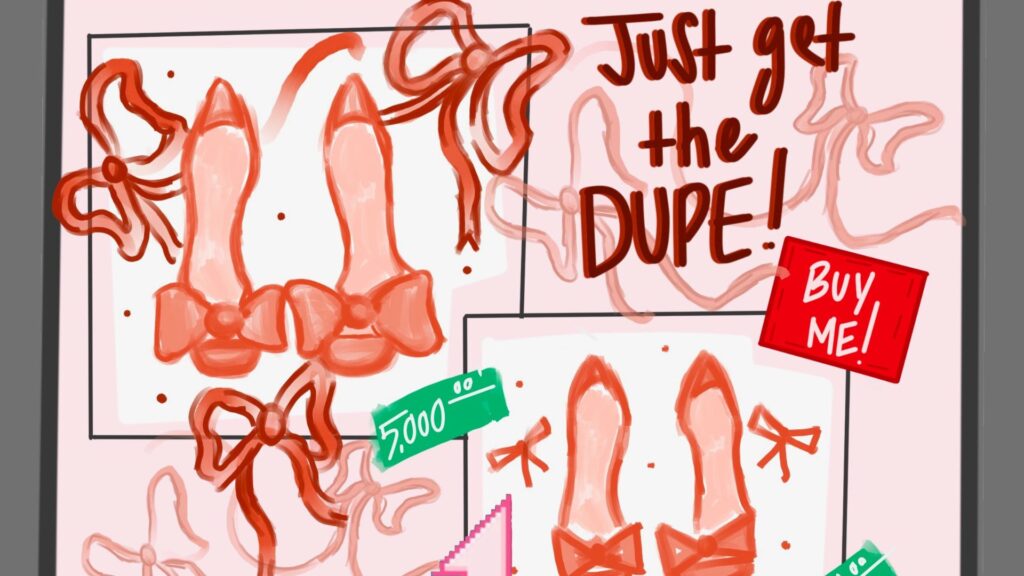How Dupes Have Ruined the Industry
Counterfeits have always existed, and finding knockoff designer items isn’t unusual. Recently, counterfeits have evolved into a socially acceptable notion known as dupes.
Dupes, or duplicates, often refer to imitations of high-end products offered at a much lower price. Thanks to platforms such as TikTok, dupes have seen a tremendous rise in popularity.
It has never been easier for consumers to access an economically viable alternative to an expensive luxury item, with influencers constantly propagating their latest dupe finds and providing the links to their audiences.
TikTok has also contributed to the overconsumption of goods. Due to users’ short attention spans and the constant need for stimulation, new microtrends emerge often.
That has led to an influx of new “it” items. As people strive to keep up with the latest trends, they resort to fast fashion and dupe culture to maintain their image.
This rapid turnover of trends has made purchasing the authentic version of trending pieces nearly impossible, which is why dupes are so convenient. With their short lifespan, it’s easy to dispose of them and swiftly move on to the next trending garment.
However, because they are inexpensive, they don’t last for more than a couple of wears and usually disintegrate at a faster rate than a higher-quality garment.
But dupes can’t be strictly seen as a negative, especially when certain retailers pass on the same low-quality garment and sell it at an exorbitant price. At this rate, it’s better to buy the replica.
Buying dupes isn’t even the issue. The issue lies in the blatant plagiarism that major fast fashion corporations like Shein commit against smaller indie brands.
The frequent purchase of duplicate items encourages large corporations to steal from designers. Although big-name brands aren’t immune either, smaller brands face the blunt end of the stick when people opt to buy the dupe from Amazon rather than consider buying from the original designer.
This pattern creates a harmful cycle in the fashion industry, where creativity and innovation are overlooked for affordability.
Not only does it affect the livelihood of independent designers, but it also hinders the industry by stifling inventiveness and originality and rewarding inferior goods for their affordability.
Buying dupes doesn’t present an ethical dilemma, considering the long-term costs, investing in higher-quality clothing that has a longer lifespan is infinitely more financially responsible.
The mass fabrication of dupes contributes to a homogeneous style, but by investing in quality pieces, consumers can expect a reduction in their environmental impact.
By not falling victim to dupe culture and genuinely searching for one-of-a-kind pieces, individuals will blossom into a personalized style that genuinely reflects who they are, because they won’t be easily swayed by mass consumption.

